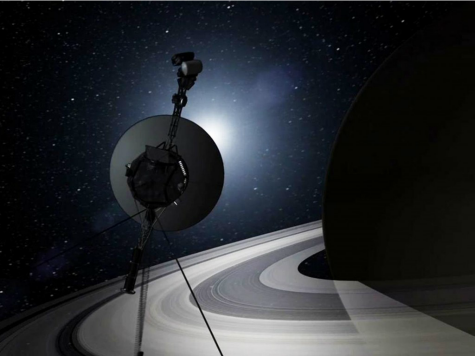Scientists’ excitement at the discovery of the Higgs-Boson, nicknamed the “God particle,” in July 2012 has subsided enough that they are in search of the next piece of the puzzle known as the Grand Unified Theory (GUT) of physics, an attempt to explain exactly how the universe works.
The next piece, supersymmetric particles, would complete an explanation of how the three Standard Model forces – electromagnetism, the strong, and the weak nuclear forces – could interact equally at very high energies, as in the early universe.
To understand why GUT is so important to scientists, it is necessary to understand certain basic concepts. First, there are four fundamental forces in the universe: the strong interaction, which has a small range, of the order of 10-13 centimeters, but is the force that holds the nuclei of atoms together; the electromagnetic force, which is weaker than the strong force but has a greater range and causes electric and magnetic effects; the weak force, which has an extremely short range but causes radioactive decay and neutrino interactions; and the gravitational force, which is quite weak but has enormous range.
The four fundamental forces are all vital, but gravitation is different because it can act over huge distances, and it can supply an attractive force between any two pieces of matter. Many scientists believe that in the very early universe when the atmosphere was extremely hot, the weak, electromagnetic, and strong forces were unified, only to separate when the temperature later dropped. There is a further theory that when the temperatures were even higher than the previous theory supposes, all four forces were unified, later separating with the cooling temperatures.
A GUT is the attempt to unite the first three forces – the strong interaction, the electromagnetic force, and the weak force. To unite all four forces in a unified theory is often called a Superunified theory.
When the Higgs-Boson was discovered, it confirmed the existence of the Higgs field. Before the Higgs field was confirmed, the Standard Model of the universe asserted that the symmetries of energy and force would mean atoms had no mass, which flies in the face of everything we see; no atoms would merge to form matter. When the Higgs-Boson was found, that seemed to solve the problem, except for one issue; the Higgs-Boson is much lighter than it should be, because when it interacts with other Standard Model particles, it should gain mass.
If supersymmetric particles were found, the puzzle of the Higgs-Boson’s mass could be solved, because that would mean every particle, whether electrons, quarks, or neutrinos, would have a superpartner of higher mass. That would make the reality of a light Higgs-Boson explicable, thus uniting the three forces of a GUT.
At CERN, where the Higgs-Boson was discovered, scientists are planning to upgrade the Large Hadron Collider, which found the Higgs-Boson, by expanding the current eight trillion electrovolts capability to fourteen TeV.

COMMENTS
Please let us know if you're having issues with commenting.